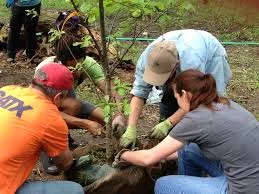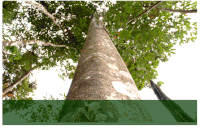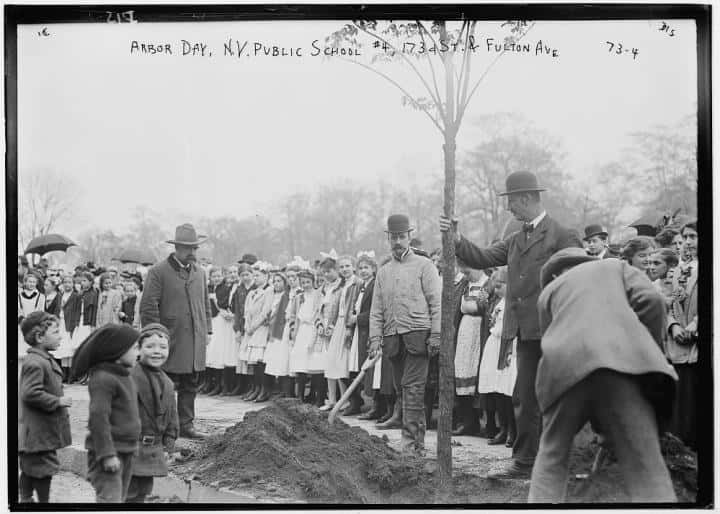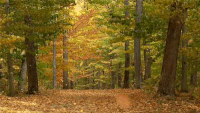
While I was researching the subject for my next post, I happened to notice that Friday April 27th, is Arbor Day. It dawned on me that this is one of those holidays I know very little about. I have discovered that this is a special holiday and I now have a newfound respect for this unusual day. On Arbor Day, people are encouraged to care for their natural environment. It’s a time for people to

get their hands in the dirt and plant and/or care for trees, bushes and plants. Events include: communal tree planting, exhibitions, fairs, music performances and open days in garden centers. Arbor Day awards are also presented in communities, schools, and organizations throughout the United States. In 1854 J Sterling Morton moved from Detroit to the area that is now Nebraska. He and other pioneers noticed a lack of trees, which were needed to act as windbreaks to stabilize the soil and to give shade from the Sun. Morton planted many trees around his own home and encouraged others to do the same.

On January 4, 1872, he proposed a holiday to plant trees on April 10 that year. This was known as “Arbor Day” and prizes were awarded to the counties and individuals who planted the most trees on the day. What a great idea…maybe that is something we should consider locally. About one million trees were planted in Nebraska on the first Arbor Day. In 1885, Arbor Day became a legal holiday and was moved to April 22, which was Morton’s birthday. In 1989 the official state holiday was moved to the last Friday in April. All states in the US now have an official Arbor Day, usually at a time of year that is has the best weather conditions for planting trees. National Arbor Day is unique in that instead of reflecting on traditions of the past, the holiday focuses on the future.

Participants take part in celebrating by planting trees for the benefit of future generations, encouraging observers to look forward instead of backward. In recent years, natural disasters, including destructive wildfires and hurricanes have ravaged millions of trees and forests across the United States. Some wildfire-scorched areas are so severely damaged that natural regeneration is impossible, according to the Arbor Day Foundation. U.S. Forest Service resources have mostly been diverted to fending off massive wildfires, leaving a lot less funding available for replanting devastated trees. It’s why replanting a tree on Arbor Day, which is recognized annually on the last Friday in April, is considered so essential to helping nature bounce back from the negative impacts of fires, diseases, weather conditions or insect infestation.

“Every Arbor Day is important, but this past year has been especially notable for the amount of natural disasters that have threatened our trees,” said professional arborist Mark Chisholm. “It’s important not only to replant trees we’ve lost, but also protect the trees we have.” The Arbor Day Foundation noted that when forests experience destruction, time is of the essence. If trees aren’t replanted within a reasonable time frame, invasive tree species and fire-prone brush could dominate, wildlife will be left homeless and critical watershed areas won’t be able to provide clean water. The Arbor Foundation’s Community Tree Recovery Program has helped restore trees in communities following natural disasters over the past six years. “There’s a really serious effort to reforest Earth,” said Earth Day Network President Kathleen Rogers. “We need to reforest in specific areas, but we also need to reforest our own communities.” “Trees are the lungs of the Earth,” she added. “They all absorb carbon dioxide and provide shade and homes for wildlife, but when you have big forests and certain kinds of forests, they act as a kind of sponge for CO2.”

In addition to regulating greenhouse gases including CO2, trees planted in urban areas help reduce ozone, which can be harmful to health over time. Trees planted in the urban outdoors also provide cities with natural cooling, reducing the heat island effect, the phenomenon of metropolitan areas being warmer than their surroundings, said Fantastic Services horticulturist and plants expert Gena Lorainne. “A mature, healthy tree with a well-developed canopy can produce enough oxygen to sustain two adult human beings,” Lorainne said. Trees also improve the water cycle in an area, and water evaporation from trees is responsible for rain in places that are not close to a natural water source, according to Lorainne. “Vegetation’s density is strictly related to rainfall,” she said. “A mature tree would evaporate around 350 gallons of water from its leaves per day.”

Wow…that is a lot of moisture that can contribute to weather patterns and help prevent drought. Not only that, but did you know the net cooling effect of a young and healthy tree is equivalent to 10 room-size air conditioners that operate 20 hours per a day, according to the U.S. Department of Agriculture. Trees can also be strategically planted to shade patios, sidewalks and driveways and cool the concrete, the entire yard and even the neighborhood. Trees are one of the easiest ways to make our world a better place to live. They provide meaningful environmental benefits, increase our property values and provide homes for animals. I have to say that there is nothing more satisfying than seeing a tree grow to be all that it can be for your community.





